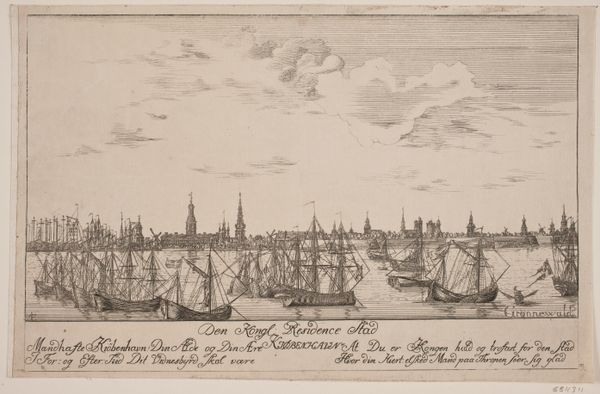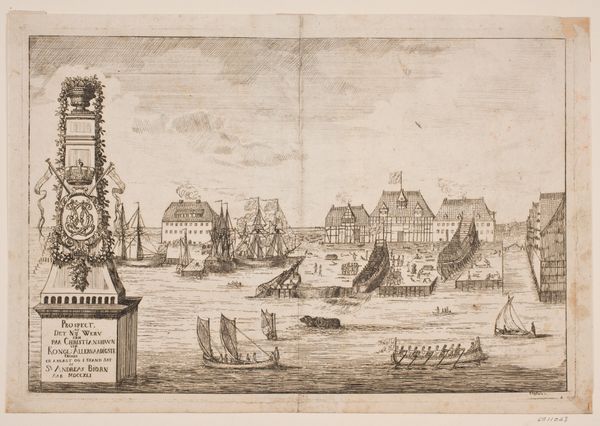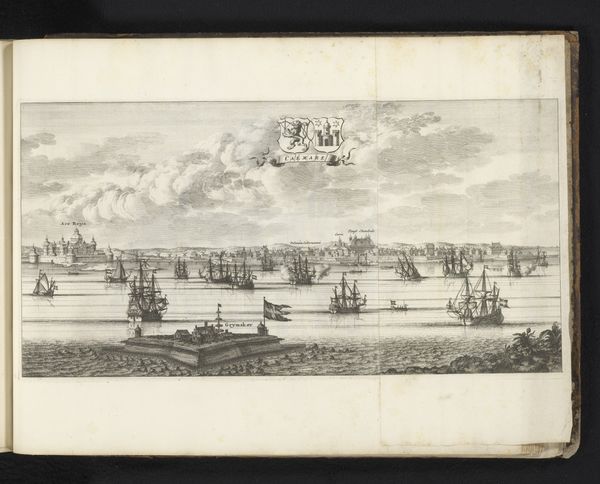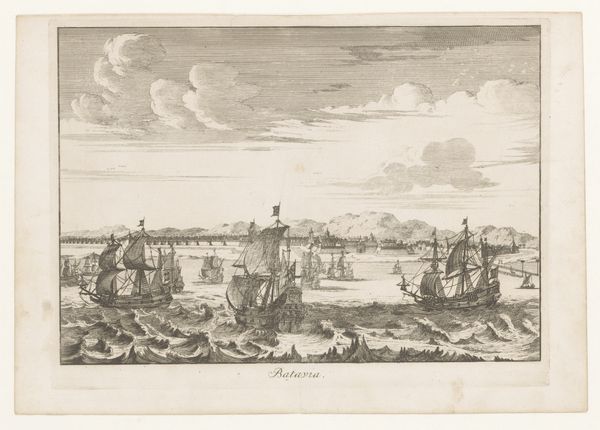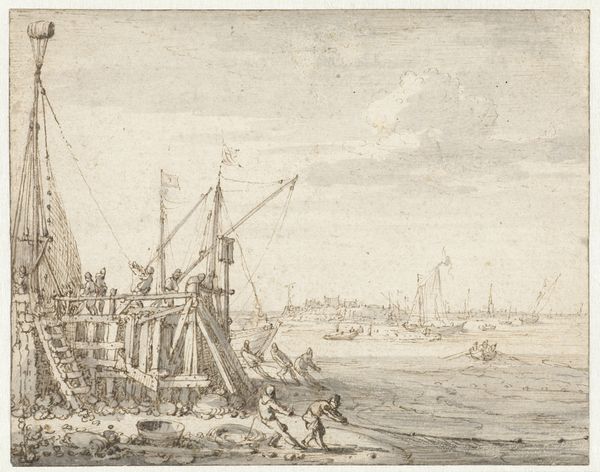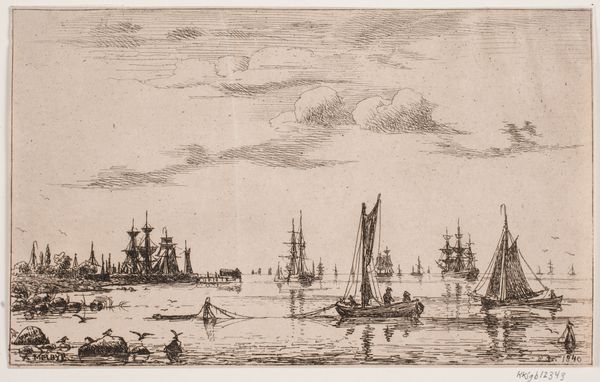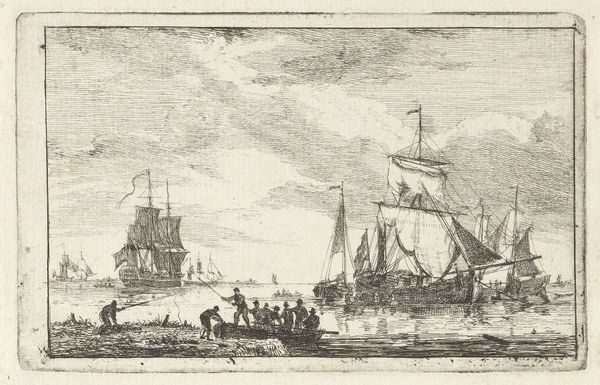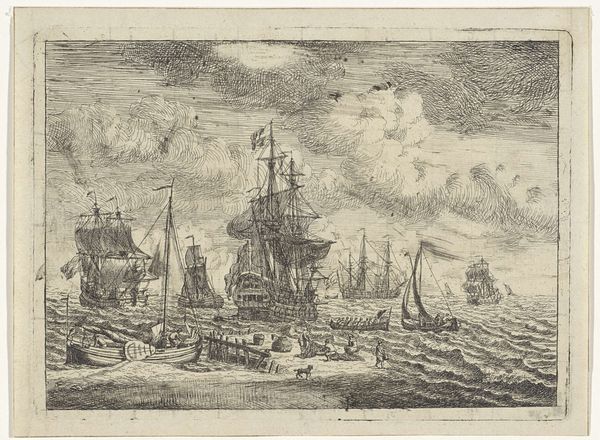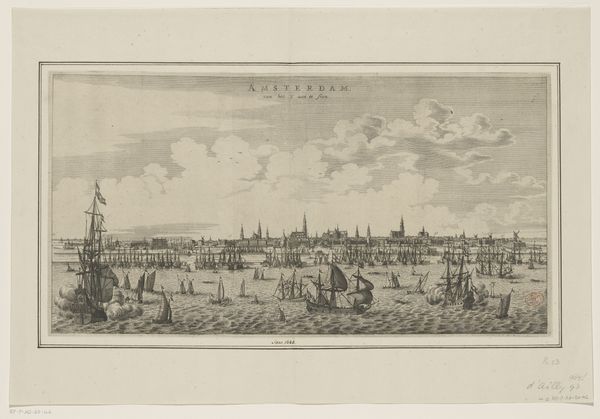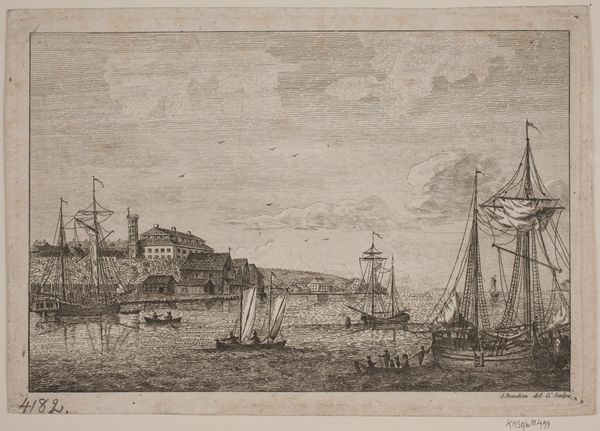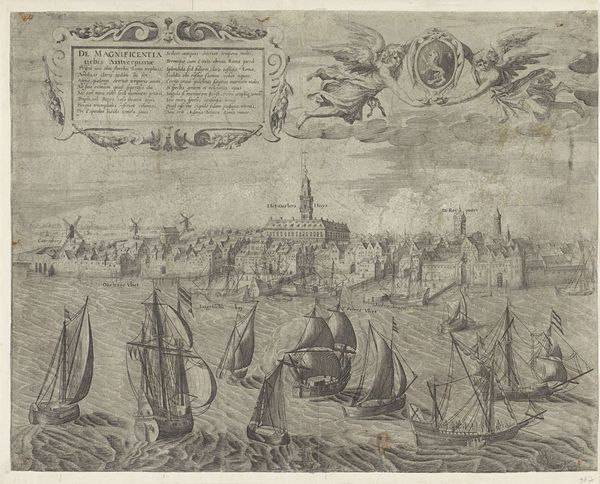
Hertugen af Cumberlands Embarquement 5. juli 1740 1742
0:00
0:00
print, etching, engraving
#
baroque
# print
#
etching
#
landscape
#
etching
#
history-painting
#
engraving
Dimensions: 207 mm (height) x 317 mm (width) (plademaal)
Christian Otto Willars made this etching, "Hertugen af Cumberlands Embarquement 5. juli 1740," using a metal plate and strong acid. This image wasn’t painted or drawn, but bitten into existence. Look closely, and you’ll see the dense network of lines used to create light and shadow, the entire scene evoked through the controlled corrosion of metal. Etching is a printmaking process. A metal plate is coated with a waxy, acid-resistant substance. The artist then scratches an image into this coating, exposing the metal beneath. When dipped in acid, the exposed lines are eaten away, creating grooves. Ink is then applied to the plate, filling the etched lines, and the surface is wiped clean. Finally, the plate is pressed onto paper, transferring the image. This printmaking technique democratized image production during the 18th century. Unlike unique paintings, etchings could be reproduced and widely distributed, contributing to a growing visual culture. It's an important point to remember: this image, and others like it, were part of a much wider information ecosystem.
Comments
No comments
Be the first to comment and join the conversation on the ultimate creative platform.
